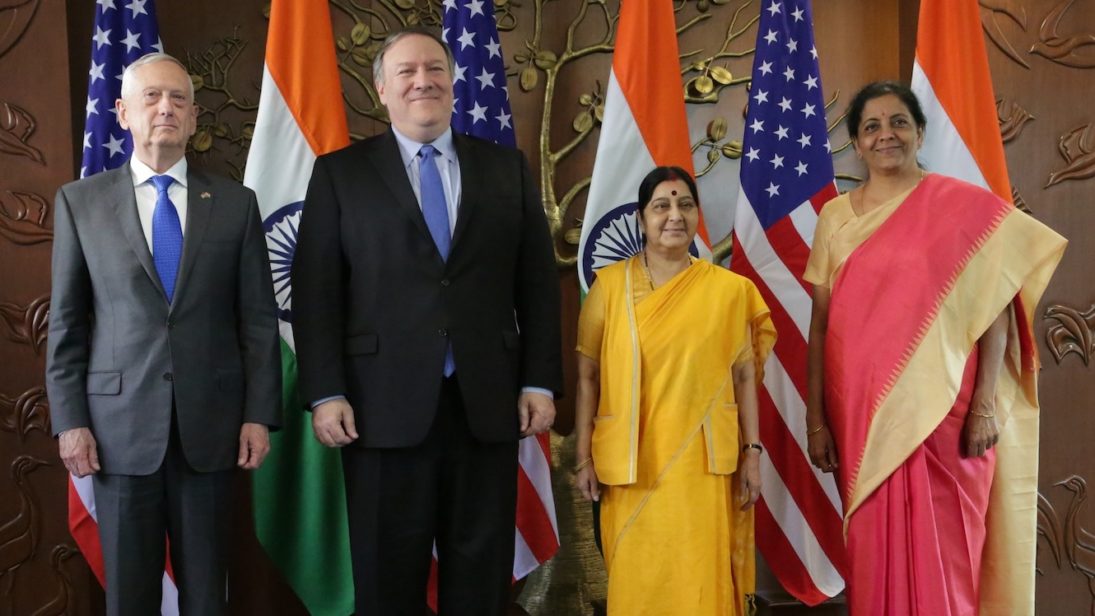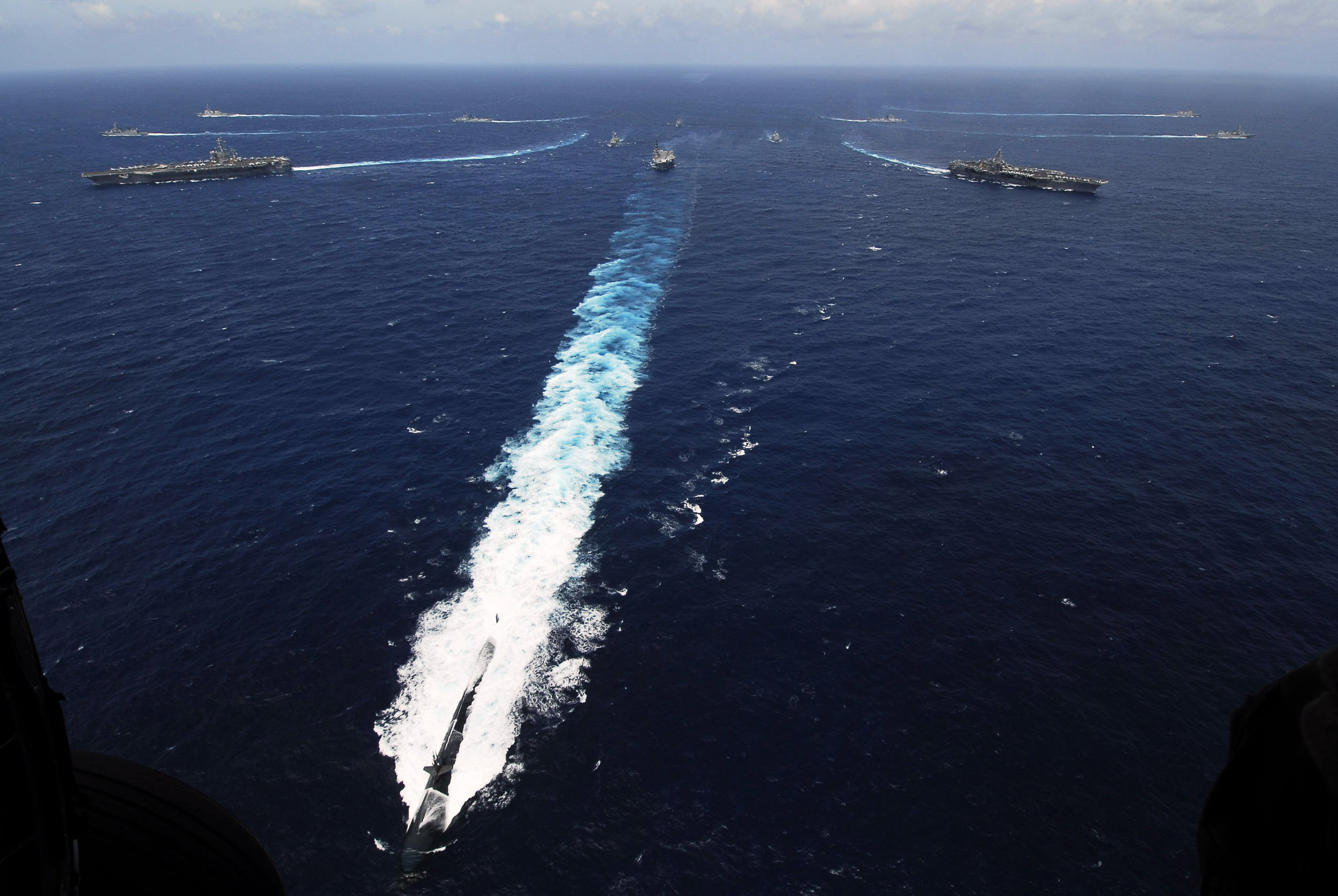
The term Indo-Pacific has undoubtedly become a focal point of global geopolitical discourse in recent times. And the question foremost on analysts’ minds is whether some of the major proponents of this new geopolitical concept are ready to embrace an Indo-Pacific vision in practice or not. A recent Washington Quarterly article by Harsh Pant and Abhijnan Rej addresses this very theme, raising concerns about India’s readiness to help engineer stability in the Indo-Pacific region. The authors do so by astutely assessing India’s military capability, particularly in comparison to China, and the nature of its partnership with the United States in the Indo-Pacific. The article is particularly relevant at a time when the Indo-Pacific debate seems to be at an inflection point, with new dynamics in India-China ties raising questions about India’s intentions in the Indo-Pacific, and more particularly, its approach to the quadrilateral (Quad) initiative, which comprises the United States, India, Japan, and Australia.
Wither India’s Indo-Pacific Pivot?
Pant and Rej argue that despite India’s support for the term and idea of the Indo-Pacific and its central role in U.S. Indo-Pacific strategy, there are three main obstacles constraining India’s ability to play a more robust role in the region. India faces strategic, naval, and normative deficits in the east that prevent it from stepping up in the Western Pacific, its relationship with China constrains it in the north, and its divergences with the United States on Iran and Pakistan limit it in the west.
The article delves into the dilemma of power asymmetry between India and China and how that restricts New Delhi’s Indo-Pacific strategy. According to the authors, China has been “leveraging its considerable material differential over India to advance positions that have often directly impinged on Indian national interest,” and steps to build cooperative behavior by New Delhi might not find much luck. Pant and Rej point out that India’s Indo-Pacific strategy is plagued by an “inconsistent approach vis-à-vis China” despite India and the United States having a common interest in counteracting China’s aggression.
Unlike the Indian understanding of the Indo-Pacific as including all littorals of the Indian and Pacific Oceans, the United States defines the region as lying between the west coast of India and the west coast of the United States. This leaves out two important littorals, Iran and Pakistan, over which U.S. and Indian interests seem to diverge. India’s geographical location puts it in the erstwhile U.S. Pacific Command’s area of responsibility (AOR) and Pakistan, by its location as well as its role in the war on terrorism, comes within the U.S. Central Command’s AOR. In this context, Pant and Rej argue that a close working relationship between the U.S. and Pakistani militaries may have an impact on the evolving mil-to-mil interoperability between India and the United States.
Hard Times Ahead for India in the Indo-Pacific
How to manage the strategic game of competition-cooperation dynamics with China remains an Indian foreign policy dilemma. While any signs of a Sino-U.S. power condominium might make India uneasy, India may still be uncomfortable being sucked into any United States-China confrontation–call it India’s balancing act or inconsistency.
The article emphasizes India’s deficit in naval capabilities compared to neighboring China, with which India not only shares a disputed land boundary but also wrestles for influence in the Indian Ocean region (IOR). This is in line with a number of reports and assessments reflecting India’s dearth of naval capabilities, whether it is a shortage of aircraft carriers, inadequate subsurface capability, or in a broader sense, as an analyst argued, “India’s maritime deployments in the Pacific do not display the intensity and vigor associated with an active naval projection strategy.” Despite claims by Indian officials about augmenting naval assets, the plethora of concerns on India’s naval preparedness with regard to threats in the IOR and lack of force projection in the Western Pacific theatre of the Indo-Pacific is too prominent to be ignored.
How to manage the strategic game of competition-cooperation dynamics with China remains an Indian foreign policy dilemma. While any signs of a Sino-U.S. power condominium might make India uneasy, India may still be uncomfortable being sucked into any United States-China confrontation–call it India’s balancing act or inconsistency. While India has been part of both rounds of recent consultations to firm up the Quad, it has also sought to parallelly smooth things over with China, having recently met for their second maritime dialogue.

Indo-U.S. Trust Gap
At the end of the paper, the authors put forth “four potential pathways that could bring India closer to … living up to its full potential as an Indo-Pacific power.” Two of the pathways revolve around United States-India-China dynamics: one relating to a U.S. response to an India-China confrontation a la Doklam, and the second is about Indian anxieties regarding a potential Sino-U.S. strategic harmony, also referred to as the G-2 power condominium. While it is pertinent to lament that the Trump administration lost a chance to align deeper with India by not calling out Chinese aggression during the Doklam standoff, the more important question is: why did the United States choose not to do so? The answer to this question might throw some light on the limitations of the Indo-U.S. relationship due to the emerging great power dynamics between the United States and China, over which New Delhi might have little control.
Despite a broad convergence over the goal to deter Chinese hegemony in the Indo-Pacific, why does the United States seem more willing to respond to Chinese actions in the Western Pacific than the Indian Ocean? This has left many in New Delhi scratching their heads.
What are the expectations from a more robust U.S.-India defense trade, in both New Delhi and Washington? How would each negotiate the terms of arrangement that will help balance India’s priority for access to high technology and America’s priority for access to the Indian defense market? […] These remain important questions to consider before one expects any sort of altruism from Washington.
Another pathway the authors suggest is for the United States to share sensitive technology with India, which has been at the heart of Indo-U.S. negotiations, including the recent 2+2 dialogue. The authors’ argument tallies with others, who see the fears regarding COMCASA and U.S. ability to snoop into Indian secured communications as exaggerated. The authors write: “While there may be good reasons for this, such as the fact that such a technology transfer would require congressional approvals, an American re-commitment to what strategist Ashley Tellis calls ‘strategic altruism’—doing more for India and expecting less in return—would be welcome.” However, how this would happen in the transactional presidency of Donald Trump remains a pertinent question.
Besides, what are the expectations from a more robust U.S.-India defense trade, in both New Delhi and Washington? How would each negotiate the terms of arrangement that will help balance India’s priority for access to high technology and America’s priority for access to the Indian defense market? What is the value attached to common Indo-U.S. objectives of deterring China’s aggression in the Indo-Pacific, through U.S. defense sales to India as a way to beef up India’s military capabilities vis-à-vis the Chinese? These remain important questions to consider before one expects any sort of altruism from Washington.
If a formal alliance with the United States is an unthinkable proposition for New Delhi, it should also temper its expectations from Washington at least in the realm of defense cooperation.
While lots of ink has been spilled on analyzing Trump’s transactional nature, such an approach is not entirely misplaced in interstate relations. Recognizing that defense sales and technology transfers are indeed transactions will save unnecessary heartburns in New Delhi. U.S. defense equipment and technology transfers are wedded to its military alliance framework besides the objective to maintain U.S. military industrial base, technological superiority, and to sustain a favorable balance of power. As such, if a formal alliance with the United States is an unthinkable proposition for New Delhi, it should also temper its expectations from Washington at least in the realm of defense cooperation.
Different Lenses, Divergent Views
The authors argue that Washington’s definition of the Indo-Pacific should include the western Indian Ocean and that it should “also put terrorism front-and-center as a key challenge to the Indo-Pacific order, which would induce India to play a larger role in the region.” However, there are lingering differences between how India approaches counterterrorism versus the United States and who supports and harbors what sort of terrorism. For the United States, Iran is a sponsor of terrorism, and for India, Pakistan is a sponsor of terrorism. It remains to be seen whether the two countries can bridge their differences on this issue, particularly while Pakistan remains a major non-NATO ally. Given America’s high stakes engagement in Afghanistan’s future and the pivotal role that Pakistan plays there, the CENTCOM is likely to prioritize its engagement with the Pakistani military, which will limit the extent of interoperability between the Indian and U.S. militaries beyond the PACOM, now called INDOPACAOM.
Concluding Thoughts
Pant and Rej have produced an evidence-based, conceptually rich analysis of why “a strong India in the Indo-Pacific is a powerful balancer for the United States in a critically important region,” what stops India from becoming a pivotal player in the Indo-Pacific, and what pathways could be adopted to channelize India’s relationship with the United States towards “developing a congruent strategy for the region.”
While it is important to ask whether India is ready for the Indo-Pacific, whether India will ever be ready for the Indo-Pacific in the way that the United States or its other Quad partners want also merits consideration.
How India can broaden its foreign policy options while practicing strategic autonomy in the complex geopolitics of the Indo-pacific will remain a prominent challenge for New Delhi. Issues of convergence and divergence in the Indo-Pacific largely revolve around operationalizing the common interest of managing China’s rise. Both India and the United States have deeply intertwined relationships with China, something that is bound to impinge on the way they perceive and evolve their own strategies in the Indo-Pacific and with implications for their bilateral cooperation in the region. While it is important to ask whether India is ready for the Indo-Pacific, whether India will ever be ready for the Indo-Pacific in the way that the United States or its other Quad partners want also merits consideration.
Editor’s Note: In an ongoing series aimed at bridging the divide between policy analysis and academic scholarship, SAV contributors review recent articles and books published by leading scholars to evaluate the latest theoretical and analytical debates on strategic issues and their implications for South Asia. Read the series here.
***
Image 1: U.S. Department of State via Flickr
Image 2: U.S. Navy photo by Mass Communication Specialist Seaman Stephen W. Rowe via Marion Doss on Flickr


